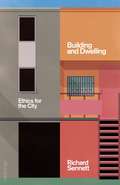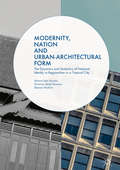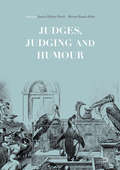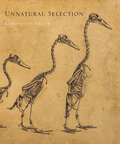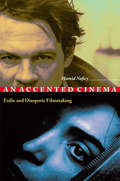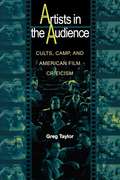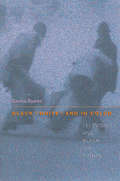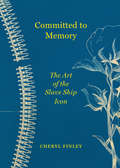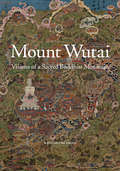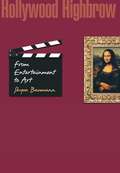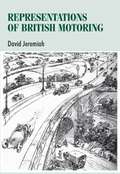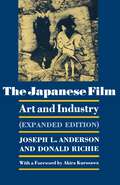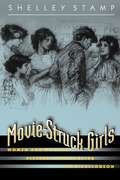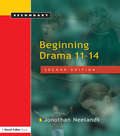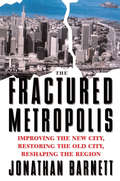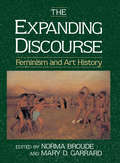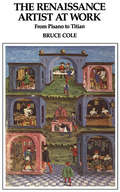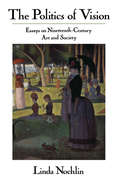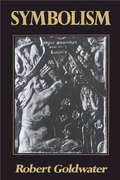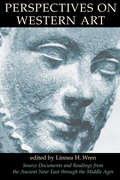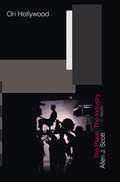- Table View
- List View
Building and Dwelling: Ethics for the City
by Richard SennettIn this sweeping study, one of the world's leading thinkers about the urban environment traces the often anguished relation between how cities are built and how people live in them, from ancient Athens to twenty-first-century Shanghai. Richard Sennett shows how Paris, Barcelona and New York City assumed their modern forms; rethinks the reputations of Jane Jacobs, Lewis Mumford and others; and takes us on a tour of emblematic contemporary locations, from the backstreets of Medellín, Colombia, to the Google headquarters in Manhattan. Through it all, he shows how the 'closed city' - segregated, regimented, and controlled - has spread from the global North to the exploding urban agglomerations of the global South. As an alternative, he argues for the 'open city,' where citizens actively hash out their differences and planners experiment with urban forms that make it easier for residents to cope. Rich with arguments that speak directly to our moment - a time when more humans live in urban spaces than ever before - Building and Dwelling draws on Sennett's deep learning and intimate engagement with city life to form a bold and original vision for the future of cities.
Modernity, Nation and Urban-Architectural Form: The Dynamics and Dialectics of National Identity vs Regionalism in a Tropical City
by Shireen Jahn Kassim Norwina Mohd Nawawi Mansor IbrahimThis book explores how Malaysia, as a multicultural modern nation, has approached issues of nationalism and regionalism in terms of physical expression of the built environment. Ever since the nation’s post-Colonial era, architects and policy makers have grappled with the theoretical and practical outcomes of creating public architecture that effectively responds to traditions, nationhood and modernity. The authors compile and analyse prevailing ideas and strategies, present case studies in architectural language and form, and introduce the reader to tensions arising between a nationalist agenda and local ‘regionalist’ architectural language. These dichotomies represent the very nature of multicultural societies and issues with identity; a challenge that various nations across the globe face in a changing environment. This topical and pertinent volume will appeal to students and scholars of urban planning, architecture and the modern city.
Modernity, Nation and Urban-Architectural Form: The Dynamics and Dialectics of National Identity vs Regionalism in a Tropical City
by Shireen Jahn Kassim Norwina Mohd Nawawi Mansor IbrahimThis book explores how Malaysia, as a multicultural modern nation, has approached issues of nationalism and regionalism in terms of physical expression of the built environment. Ever since the nation’s post-Colonial era, architects and policy makers have grappled with the theoretical and practical outcomes of creating public architecture that effectively responds to traditions, nationhood and modernity. The authors compile and analyse prevailing ideas and strategies, present case studies in architectural language and form, and introduce the reader to tensions arising between a nationalist agenda and local ‘regionalist’ architectural language. These dichotomies represent the very nature of multicultural societies and issues with identity; a challenge that various nations across the globe face in a changing environment. This topical and pertinent volume will appeal to students and scholars of urban planning, architecture and the modern city.
Judges, Judging and Humour
by Jessica Milner Davis Sharyn Roach AnleuThis book examines social aspects of humour relating to the judiciary, judicial behaviour, and judicial work across different cultures and eras, identifying how traditionally recorded wit and humorous portrayals of judges reflect social attitudes to the judiciary over time. It contributes to cultural studies and social science/socio-legal studies of both humour and the role of emotions in the judiciary and in judging. It explores the surprisingly varied intersections between humour and the judiciary in several legal systems: judges as the target of humour; legal decisions regulating humour; the use of humour to manage aspects of judicial work and courtroom procedure; and judicial/legal figures and customs featuring in comic and satiric entertainment through the ages.Delving into the multi-layered connections between the seriousness of the work of the judiciary on the one hand, and the lightness of humour on the other hand, this fascinating collection will be of particular interest to scholars of the legal system, the criminal justice system, humour studies, and cultural studies.
Judges, Judging and Humour
by Jessica Milner Davis Sharyn Roach AnleuThis book examines social aspects of humour relating to the judiciary, judicial behaviour, and judicial work across different cultures and eras, identifying how traditionally recorded wit and humorous portrayals of judges reflect social attitudes to the judiciary over time. It contributes to cultural studies and social science/socio-legal studies of both humour and the role of emotions in the judiciary and in judging. It explores the surprisingly varied intersections between humour and the judiciary in several legal systems: judges as the target of humour; legal decisions regulating humour; the use of humour to manage aspects of judicial work and courtroom procedure; and judicial/legal figures and customs featuring in comic and satiric entertainment through the ages.Delving into the multi-layered connections between the seriousness of the work of the judiciary on the one hand, and the lightness of humour on the other hand, this fascinating collection will be of particular interest to scholars of the legal system, the criminal justice system, humour studies, and cultural studies.
Unnatural Selection (PDF) (400MB+)
by Katrina Van GrouwUnnatural Selection is a stunningly illustrated book about selective breeding--the ongoing transformation of animals at the hand of man. More important, it's a book about selective breeding on a far, far grander scale—a scale that encompasses all life on Earth. We'd call it evolution. A unique fusion of art, science, and history, this book celebrates the 150th anniversary of Charles Darwin's monumental work The Variation of Animals and Plants under Domestication, and is intended as a tribute to what Darwin might have achieved had he possessed that elusive missing piece to the evolutionary puzzle—the knowledge of how individual traits are passed from one generation to the next. With the benefit of a century and a half of hindsight, Katrina van Grouw explains evolution by building on the analogy that Darwin himself used—comparing the selective breeding process with natural selection in the wild, and, like Darwin, featuring a multitude of fascinating examples. This is more than just a book about pets and livestock, however. The revelation of Unnatural Selection is that identical traits can occur in all animals, wild and domesticated, and both are governed by the same evolutionary principles. As van Grouw shows, animals are plastic things, constantly changing. In wild animals the changes are usually too slow to see—species appear to stay the same. When it comes to domesticated animals, however, change happens fast, making them the perfect model of evolution in action. Suitable for the lay reader and student, as well as the more seasoned biologist, and featuring more than four hundred breathtaking illustrations of living animals, skeletons, and historical specimens, Unnatural Selection will be enjoyed by anyone with an interest in natural history and the history of evolutionary thinking. Katrina van Grouw, author of The Unfeathered Bird (Princeton), inhabits that no-man's-land midway between art and science. She holds degrees in fine art and natural history illustration and is a former curator of ornithological collections at a major national museum. She's a self-taught scientist with a passion for evolutionary biology and its history.
An Accented Cinema: Exilic and Diasporic Filmmaking
by Hamid NaficyIn An Accented Cinema, Hamid Naficy offers an engaging overview of an important trend--the filmmaking of postcolonial, Third World, and other displaced individuals living in the West. How their personal experiences of exile or diaspora translate into cinema is a key focus of Naficy's work. Although the experience of expatriation varies greatly from one person to the next, the films themselves exhibit stylistic similarities, from their open- and closed-form aesthetics to their nostalgic and memory-driven multilingual narratives, and from their emphasis on political agency to their concern with identity and transgression of identity. The author explores such features while considering the specific histories of individuals and groups that engender divergent experiences, institutions, and modes of cultural production and consumption. Treating creativity as a social practice, he demonstrates that the films are in dialogue not only with the home and host societies but also with audiences, many of whom are also situated astride cultures and whose desires and fears the filmmakers wish to express. Comparing these films to Hollywood films, Naficy calls them "accented." Their accent results from the displacement of the filmmakers, their alternative production modes, and their style. Accented cinema is an emerging genre, one that requires new sets of viewing skills on the part of audiences. Its significance continues to grow in terms of output, stylistic variety, cultural diversity, and social impact. This book offers the first comprehensive and global coverage of this genre while presenting a framework in which to understand its intricacies.
Artists in the Audience: Cults, Camp, and American Film Criticism (PDF)
by Greg TaylorGone with the Wind an inspiration for the American avant-garde? Mickey Mouse a crucial source for the development of cutting-edge intellectual and aesthetic ideas? As Greg Taylor shows in this witty and provocative book, the idea is not so far-fetched. One of the first-ever studies of American film criticism, Artists in the Audience shows that film critics, beginning in the 1940s, turned to the movies as raw material to be molded into a more radical modernism than that offered by any other contemporary artists or thinkers. In doing so, they offered readers a vanguard alternative that reshaped postwar American culture: nonaesthetic mass culture reconceived and refashioned into rich, personally relevant art by the attuned, creative spectator.
Black, White, and in Color: Television and Black Civil Rights (PDF)
by Sasha TorresThis book examines the representation of blackness on television at the height of the southern civil rights movement and again in the aftermath of the Reagan-Bush years. In the process, it looks carefully at how television's ideological projects with respect to race have supported or conflicted with the industry's incentive to maximize profits or consolidate power. Sasha Torres examines the complex relations between the television industry and the civil rights movement as a knot of overlapping interests. She argues that television coverage of the civil rights movement during 1955-1965 encouraged viewers to identify with black protestors and against white police, including such infamous villains as Birmingham's Bull Connor and Selma's Jim Clark. Torres then argues that television of the 1990s encouraged viewers to identify with police against putatively criminal blacks, even in its dramatizations of police brutality. Torres's pioneering analysis makes distinctive contributions to its fields. It challenges television scholars to consider the historical centrality of race to the constitution of the medium's genres, visual conventions, and industrial structures. And it displaces the analytical focus on stereotypes that has hamstrung assessments of television's depiction of African Americans, concentrating instead on the ways in which African Americans and their political collectives have actively shaped that depiction to advance civil rights causes. This book also challenges African American studies to pay closer and better attention to television's ongoing role in the organization and disorganization of U.S. racial politics.
Committed To Memory: The Art Of The Slave Ship Icon (PDF)
by C. Stephen FinleyHow an eighteenth-century engraving of a slave ship became a cultural icon of black resistance, identity, and remembrance One of the most iconic images of slavery is a schematic wood engraving depicting the human cargo hold of a slave ship. First published by British abolitionists in 1788, it exposed this widespread commercial practice for what it really was--shocking, immoral, barbaric, unimaginable. Printed as handbills and broadsides, the image Cheryl Finley has termed the "slave ship icon" was easily reproduced, and by the end of the eighteenth century it was circulating by the tens of thousands around the Atlantic rim. Committed to Memory provides the first in-depth look at how this artifact of the fight against slavery became an enduring symbol of black resistance, identity, and remembrance. Finley traces how the slave ship icon became a powerful tool in the hands of British and American abolitionists, and how its radical potential was rediscovered in the twentieth century by black artists, activists, writers, filmmakers, and curators. Finley offers provocative new insights into the works of Amiri Baraka, Romare Bearden, Betye Saar, and many others. She demonstrates how the icon was transformed into poetry, literature, visual art, sculpture, performance, and film-and became a medium through which diasporic Africans have reasserted their common identity and memorialized their ancestors. Beautifully illustrated, Committed to Memory features works from around the world, taking readers from the United States and England to West Africa and the Caribbean. It shows how contemporary black artists and their allies have used this iconic eighteenth-century engraving to reflect on the trauma of slavery and come to terms with its legacy.
Mount Wutai: Visions of a Sacred Buddhist Mountain
by Wen-Shing ChouThe northern Chinese mountain range of Mount Wutai has been a preeminent site of international pilgrimage for over a millennium. Home to more than one hundred temples, the entire range is considered a Buddhist paradise on earth, and has received visitors ranging from emperors to monastic and lay devotees. Mount Wutai explores how Qing Buddhist rulers and clerics from Inner Asia, including Manchus, Tibetans, and Mongols, reimagined the mountain as their own during the eighteenth and nineteenth centuries.Wen-Shing Chou examines a wealth of original source materials in multiple languages and media--many never before published or translated—such as temple replicas, pilgrimage guides, hagiographic representations, and panoramic maps. She shows how literary, artistic, and architectural depictions of the mountain permanently transformed the site's religious landscape and redefined Inner Asia's relations with China. Chou addresses the pivotal but previously unacknowledged history of artistic and intellectual exchange between the varying religious, linguistic, and cultural traditions of the region. The reimagining of Mount Wutai was a fluid endeavor that proved central to the cosmopolitanism of the Qing Empire, and the mountain range became a unique site of shared diplomacy, trade, and religious devotion between different constituents, as well as a spiritual bridge between China and Tibet.A compelling exploration of the changing meaning and significance of one of the world's great religious sites, Mount Wutai offers an important new framework for understanding Buddhist sacred geography.
Mount Wutai: Visions of a Sacred Buddhist Mountain
by Wen-Shing ChouThe northern Chinese mountain range of Mount Wutai has been a preeminent site of international pilgrimage for over a millennium. Home to more than one hundred temples, the entire range is considered a Buddhist paradise on earth, and has received visitors ranging from emperors to monastic and lay devotees. Mount Wutai explores how Qing Buddhist rulers and clerics from Inner Asia, including Manchus, Tibetans, and Mongols, reimagined the mountain as their own during the eighteenth and nineteenth centuries.Wen-Shing Chou examines a wealth of original source materials in multiple languages and media--many never before published or translated—such as temple replicas, pilgrimage guides, hagiographic representations, and panoramic maps. She shows how literary, artistic, and architectural depictions of the mountain permanently transformed the site's religious landscape and redefined Inner Asia's relations with China. Chou addresses the pivotal but previously unacknowledged history of artistic and intellectual exchange between the varying religious, linguistic, and cultural traditions of the region. The reimagining of Mount Wutai was a fluid endeavor that proved central to the cosmopolitanism of the Qing Empire, and the mountain range became a unique site of shared diplomacy, trade, and religious devotion between different constituents, as well as a spiritual bridge between China and Tibet.A compelling exploration of the changing meaning and significance of one of the world's great religious sites, Mount Wutai offers an important new framework for understanding Buddhist sacred geography.
Hollywood Highbrow: From Entertainment to Art (PDF) (Princeton Studies in Cultural Sociology #30)
by Shyon BaumannToday's moviegoers and critics generally consider some Hollywood products--even some blockbusters--to be legitimate works of art. But during the first half century of motion pictures very few Americans would have thought to call an American movie "art." Up through the 1950s, American movies were regarded as a form of popular, even lower-class, entertainment. By the 1960s and 1970s, however, viewers were regularly judging Hollywood films by artistic criteria previously applied only to high art forms. In Hollywood Highbrow, Shyon Baumann for the first time tells how social and cultural forces radically changed the public's perceptions of American movies just as those forces were radically changing the movies themselves. The development in the United States of an appreciation of film as an art was, Baumann shows, the product of large changes in Hollywood and American society as a whole. With the postwar rise of television, American movie audiences shrank dramatically and Hollywood responded by appealing to richer and more educated viewers. Around the same time, European ideas about the director as artist, an easing of censorship, and the development of art-house cinemas, film festivals, and the academic field of film studies encouraged the idea that some American movies--and not just European ones--deserved to be considered art.
Representations Of British Motoring (Studies In Design Ser. (PDF) )
by David JeremiahRepresentations of British motoring provides important new insights into the established discourses of British motoring. Based on the patterns of representation that have mediated between the trade, owners and society, particularly the myths and realities generated by the advertising campaigns and motoring journals, it identifies the landmarks of change and innovation. It is not about great images as such, although some are, but particular attention has been directed towards the creative intervention of the artist-illustrators. Part One emphasises the critical significance of the emerging concerns and aspirations of the first decade of motoring, while the two subsequent parts provide a clear understanding of how the continuity of the public debate has shaped the concepts of modern and popular motoring. The new models, motorists and motoring landscape are the central themes through which it has been possible to track the preoccupation with questions regarding speed and safety, the idea of being British, the aesthetics of the car and motoring, and the family, women and the car. As such it is a design history that redefines and extends the parameters of the history of motoring, providing an overview of the place of the motor-car and motoring in British society that is relevant to undergraduate and postgraduate studies and the motoring enthusiast. -- .
The Japanese Film: Art and Industry - Expanded Edition (PDF)
by Donald Richie Joseph L. AndersonTracing the development of the Japanese cinema from 1896 (when the first Kinetoscope was imported) through the golden ages of film in Japan up to today, this work reveals the once flourishing film industry and the continuing unique art of the Japanese film. Now back in print with updated sections, major revaluations, a comprehensive international bibliography, and an exceptional collection of 168 stills ranging over eight decades, this book remains the unchallenged reference for all who seek a broad understanding of the aesthetic, historical, and economic elements of motion pictures from Japan.
Movie-Struck Girls: Women and Motion Picture Culture after the Nickelodeon (PDF)
by Shelley StampMovie-Struck Girls examines women's films and filmgoing in the 1910s, a period when female patronage was energetically courted by the industry for the first time. By looking closely at how women were invited to participate in movie culture, the films they were offered, and the visual pleasures they enjoyed, Shelley Stamp demonstrates that women significantly complicated cinemagoing throughout this formative, transitional era. Growing female patronage and increased emphasis on women's subject matter did not necessarily bolster cinema's cultural legitimacy, as many in the industry had hoped, for women were not always enticed to the cinema by dignified, uplifting material, and once there, they were not always seamlessly integrated in the social space of theaters, nor the new optical pleasures of film viewing. In fact, Stamp argues that much about women's films and filmgoing in the postnickelodeon years challenged, rather than served, the industry's drive for greater respectability. White slave films, action-adventure serial dramas, and women's suffrage photoplays all drew female audiences to the cinema with stories aimed directly at women's interests and with advertising campaigns that specifically targeted female moviegoers. Yet these examples suggest that women's patronage was built with stories focused on sexuality, sensational thrill-seeking, and feminist agitation, topics not normally associated with ladylike gentility. And in each case concerns were raised about women's conduct at cinemas and the viewing habits they enjoyed, demonstrating that women's integration into motion picture culture was not as smooth as many have thought.
Beginning Drama 11–14
by Jonothan NeelandsThis guide explores the roles, skills and knowledge needed to become an effective drama teacher. It combines practical advice on planning, teaching and assessing with the best teaching practices. It also offers lesson plans for years 7-9 students to use intheir teaching.
Beginning Drama 11–14
by Jonothan NeelandsThis guide explores the roles, skills and knowledge needed to become an effective drama teacher. It combines practical advice on planning, teaching and assessing with the best teaching practices. It also offers lesson plans for years 7-9 students to use intheir teaching.
The Fractured Metropolis: Improving The New City, Restoring The Old City, Reshaping The Region
by Jonathan BarnettTargeted at architects, students, urban designers and planners, landscape architects, and city and regional officials, The Fractured Metropolis provides a thorough analysis of not only cities but also the entire metropolitan region, considering how both are intrinsically linked and influence one other.
The Expanding Discourse: Feminism And Art History
by Norma BroudeA sequel to the pioneering volume, Feminism and Art History: Questioning the Litany, published in 1982, The Expanding Discourse contains 29 essays on artists and issues from the Renaissance to the present, representing some of the best feminist art-historical writing of the past decade. Chronologically arranged, the essays demonstrate the abundance, diversity, and main conceptual trends in recent feminist scholarship.
The Renaissance Artist At Work: From Pisano To Titian
by Bruce ColeThis book gives the necessary background for the study and appreciation of Italian painting and sculpture from about 1250 to 1550. It tells how the artists learned their craft, the organization of their workshops, and the guilds they belonged to; how their customers or patrons treated them and where their work was displayed?churches, civic buildings, or private homes. The book discusses how art was made?tempera, oil, panel, canvas, fresco; it surveys the characteristic types of Renaissance art?altarpieces, portraits, tombs, busts, doors fountains, medals, etc.
The Politics Of Vision: Essays On Nineteenth-century Art And Society
by Linda NochlinA leading critic and historian of nineteenth-century art and society explores in nine essays the interaction of art, society, ideas, and politics.
Symbolism
by Robert GoldwaterThis encyclopedic guide explores the rich and varied meanings of more than 2,000 symbols?from amethyst to Zodiac.
Perspectives On Western Art, Vol.1: Source Documents And Readings From The Ancient Near East Through The Middle Ages
by Linnea WrenThis anthology of readings related to Western art history explains specific works of art illustrated in Janson's History of Art and De la Croix and Tansey's Gardner's Art Through the Ages in terms of the ideas, beliefs, and concerns of the people and cultures who created the art. It brings a new understanding of art because it shows the social and cultural basis of major works of art through history. The ten sections are Ancient Near East; Egyptian; Aegean; Greek; Etruscan; Roman; early Christian, Byzantine, and Islamic; early Medieval; Romanesque; and Gothic. The readings have been drawn from many areas of intellectual and social history, including religion, philosophy, literature, science, economics, and law. Each selection is preceded by an introductory note, which discusses the readings in terms of its subject and theme, its source and usage, and its relevance to the study of the work of art.
On Hollywood: The Place, The Industry (PDF)
by Allen J. ScottWhy is the U.S. motion picture industry concentrated in Hollywood and why does it remain there in the age of globalization? Allen Scott uses the tools of economic geography to explore these questions and to provide a number of highly original answers. The conceptual roots of his analysis go back to Alfred Marshall's theory of industrial districts and pick up on modern ideas about business clusters as sites of efficient and innovative production. On Hollywood builds on this work by adding major new empirical elements. By examining the history of motion-picture production from the early twentieth century to the present through this analytic lens, Scott is able to show why the industry (which was initially focused on New York) had shifted the majority of its production to Southern California by 1919. He also addresses in detail the bases of Hollywood's long-standing creative energies and competitive advantages. At the same time, the book explores the steady globalization of Hollywood's market reach as well as the cultural and political dilemmas posed by this phenomenon. On Hollywood will appeal not only to general readers with an interest in the motion-picture industry, but also to economic geographers, business professionals, regional development practitioners, and cultural theorists as well.
